
I ran across a very
interesting article about a Seiche that hit Chicago on June 26, 1954, killing 8 on the beachhead.
So what is a Seiche? Well according to the USGS....
Seismic Seiches are standing waves set up on rivers, reservoirs, ponds, and lakes when seismic waves from an earthquake pass through the area. They are in direct contrast toThe term seismic seiche was first coined by Anders Kvale in 1955 to describe oscillation of lake levels in Norway and England caused by the
Assam earthquake of August, 1950. But this was not the first time that seismic seiches had been observed. The first published mention was after the great
earthquake of November 1755 at Lisbon, Portugal. An article in Scot's Magazine in 1755 described seiches in Scotland in Loch Lomond, Loch Long, Loch Katrine and Loch Ness. They were also seen in English harbors and ponds and were originally described in the Proceedings of the Royal Society in 1755.
Earthquake effects recorded by surface-water gages were first noticed by A.M. Piper of the U.S. Geological Survey (USGS). He reported that two of six gauges on the Mokelumne River in California showed a slight fluctuation caused by the December 20, 1932 earthquake at Lodi, California. Since then many seiches resulting from earthquakes have been recorded. Kvale made a detailed study of 29 seiches recorded in fiords and lakes in Norway and four seiches on reservoirs in England, all caused by the 1950 Assam earthquake. Frank Stermitz, a USGS scientist, reported readings from 54 stream gages that recorded seiches caused by the Hebgen Lake, Montana, earthquake of 17 August 1959. These were in Montana, Wyoming, Idaho, and Alberta, Canada - the most distant seiche being 545 kilometers from the epicenter.
Seismic waves from the Alaska earthquake of 28 March, 1964, were so powerful that they caused water bodies to oscillate at many places in North America. Seiches were recorded at hundreds of surface-water gaging stations - although they had rarely been reported following previous earthquakes. Indeed, four seiches were observed in Australia.
Some of the 1964 seiches were very large. Waves as high as 1.8 meters were reported on the Gulf Coast - probably because they were generated in resonance with the seismic surface waves.
Arthur McGarr and Robert C. Vorhis studied the continental distribution of seiches produced by the Alaska earthquake. They divided the seiches into two groups - those that occurred in Alaska itself and those that occurred outside the State.
The Alaska seiches were not wholly seismic, but were caused by landslides, submarine slides, tsunamis, and tilting - as well as by seismic surface waves. It was therefore difficult to isolate a particular mechanism for seiches produced within the epicentral region. At teleseismic distances (greater than 1000 kilometers) from the epicenter, inelastic effects are unimportant and seiches are generated solely by seismic surface waves.
After the 1964 Alaska earthquake, the southeastern part of the United States had by far the greatest density of seiches. Other high density areas included north and central New Mexico, eastern Kansas, and the region at the southern tip of Lake Michigan. The areas west of the Rockies, the Middle Atlantic States and New England experienced few or no seiches.
The 1964 distribution does not have any obvious dependence on distance or azimuth from the epicenter. But it does seem to have definite regional patterns, which reflect the influence of major geologic features:
- The density of seiches is roughly proportional to the thickness of surface sediments, for example, in the Mississippi Delta region.
- Thrust faults apparently provide a favorable environment for seiche generation. The relationship is especially clear in Georgia, near the Brevard thrust zone, in the Ouachita Mountains, and also in the Valley and Ridge province of Tennessee and Alabama.
- Seiche locations were also controlled by structural uplifts and basins - such as the Williston and Michigan basins.
Abridged from Earthquake Information Bulletin, January-February 1976, Volume 8, Number 1.
See also: Seismic seiches from the March 1964 Alaska earthquake
Dockside Consultants has another brief on Seiches ...
Seiching Following one of Southern California’s earthquakes, I noted that some of the water had splashed out of a neighbor’s swimming pool. When I inquired as to how this had happened, he described a series of waves created during the earthquake. This phenomenon is known as seiching and can occur when any external force disturbs an enclosed body of water. Waves move back and forth from one end to the other. The period of the waves depends on the size (length and depth) of the body of water. (See Appendix 1 for typical calculations.) In this sense they can also be described as standing waves. Seiches can be caused in bays and harbors by tidal currents, by the arrival of a distant swell with just the right period, or by storms or a tsunami. Sometimes these will oscillate for days.[37] Seiches are generally not a problem and are detectable only by means of careful measurements. However, in the case of harbor designs, one usually studies the predominant wave periods in the area and ensures that the harbor dimensions do not create a condition where large seiches can occur, since this could cause excessive movement of floating docks and straining of vessel mooring lines.
Hurricane Katrina (August 29, 2005) caused an 8 meter (26 foot) storm surge. This raised the level of Lake Pontchartrain enough to damage the levees and flood New Orleans. It also caused a rotating seich that lasted for several days.[38]
On a large scale, seiches have proved dangerous, damaging boats at dock, and occasionally killing people fishing near shores or on breakwaters. Such an incident occurred on June 26, 1954, when a 3 meter (10 foot) high wave suddenly rolled in from Lake Michigan and swept eight fishermen off of a breakwater, drowning them.[39]
A seich requires some exciting force. On the Great Lakes, seiches are caused by fast moving thunderstorms or squall lines that move eastward across the lake. The combination of the wind blowing toward a low pressure area enables a wave to form. In deep water, the wave is not very high. With the right wind speed and direction, the squall line can move as fast as the wave front, literally pushing it ahead. As the wave approaches shallow water near the shore, its height increases, governed by the same physics as any other wave. After hitting the Michigan side of the lake, the wave is reflected back toward the Illinois side. This is where its insidious nature becomes evident. If the originating storm was fairly short-lived, the chances are that the lake has returned to normal on the Illinois side; boaters and others may have resumed their activities in the aftermath of the storm. Suddenly, out of nowhere, a wave can appear and disrupt the scene. In 35 years, there have been five major seiches that have caused damage along the Chicago lakefront. During the summer of 1988 there were three noteworthy seiches along the Chicago lakeshore. These were not as bad as the one in 1954, but some damage resulted. They caused the water level to rise or fall by as much as 0.3 to 1.2 meters (1 to 4 feet), in some cases with the change occurring in less than 10 minutes. Boats can drop and hit bottom, or if dock lines are snug, the lines can break or rip cleats out of the boat or off the dock.
And from the University of Wisconsin ...
What is a seiche? (pronounced "saysh") Like water sloshing in a bathtub, seiches are tide-like rises and drops in Great Lakes coastal water levels caused by prolonged strong winds that push water toward one side of the lake, causing the water level to rise on the downwind side of the lake and to drop on the upwind side. When the wind stops, the water sloshes back and forth, with the nearshore water level rising and falling in decreasingly small amounts on both sides of the lake until it reaches equilibrium.

Are Seiches common? According to Deane Wassink who went ahead a did some research into the phenomena. They are not that common, but the phenomena is also recent..
On April 7, 1893 a gale pushed a seich of four to five feet high into the port of Chicago causing serious damage to many boats. At the same time in St. Joseph, Michigan it pushed inland seven hundred feet past the normal high water mark on the shore.
On June 26, 1954 a ten foot high seiche slammed into Chicago sweeping seven people off a dock to their deaths.
An especially interesting story occurred in Muskegon, Michigan. On May 30, 1998 a giant thunderstorm known as a "derecho" ( pronounced "deret-cho") tore across the Great Lakes causing tremendous damage with its tornado strength straight line winds. A tugboat crew saw the storm approaching and headed into the Muskegon harbor for safety. They felt the seiche pick them up and go past them. When the front of the storm passed the crew turned the boat around to head out of the harbor. The returning slosh of the seiche as it was focused by the narrow channel was so high and violent that it overturned the tugboat! Thankfully, the crew was rescued without serious injury or loss of life.
Just a fasinating phenomena..
RS

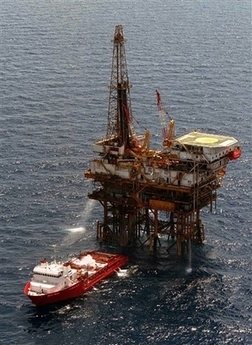
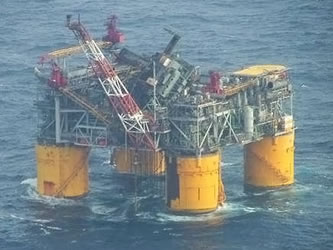







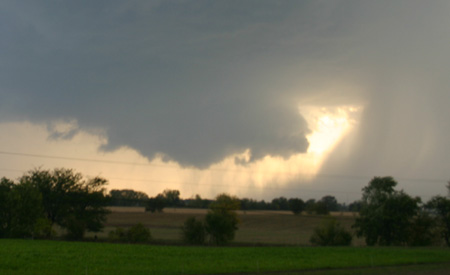











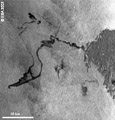
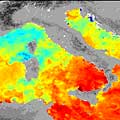
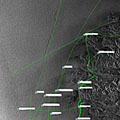
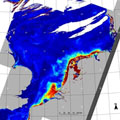





































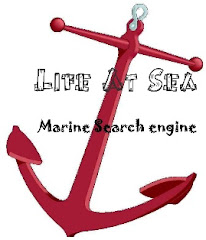






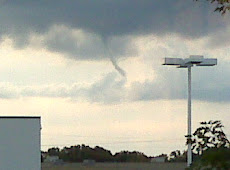






















































![Validate my RSS feed [Valid RSS]](valid-rss.png)